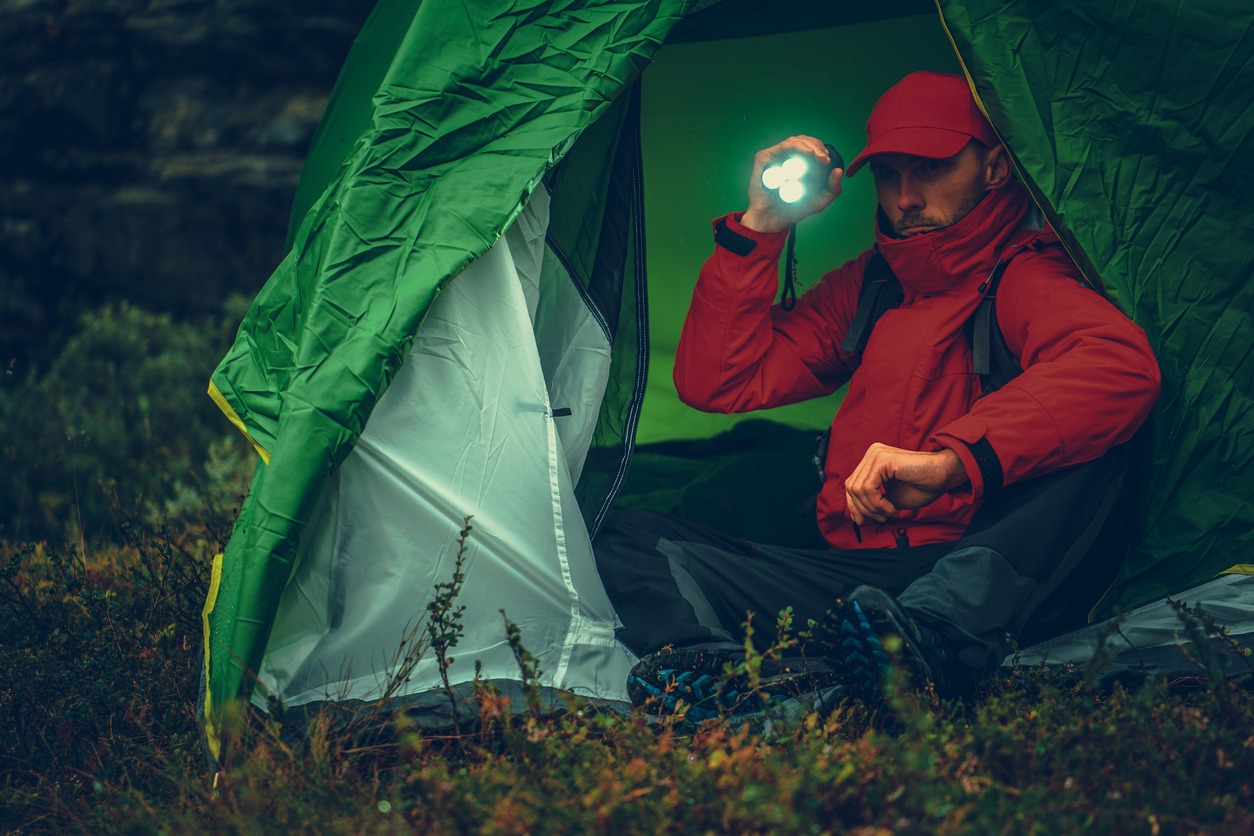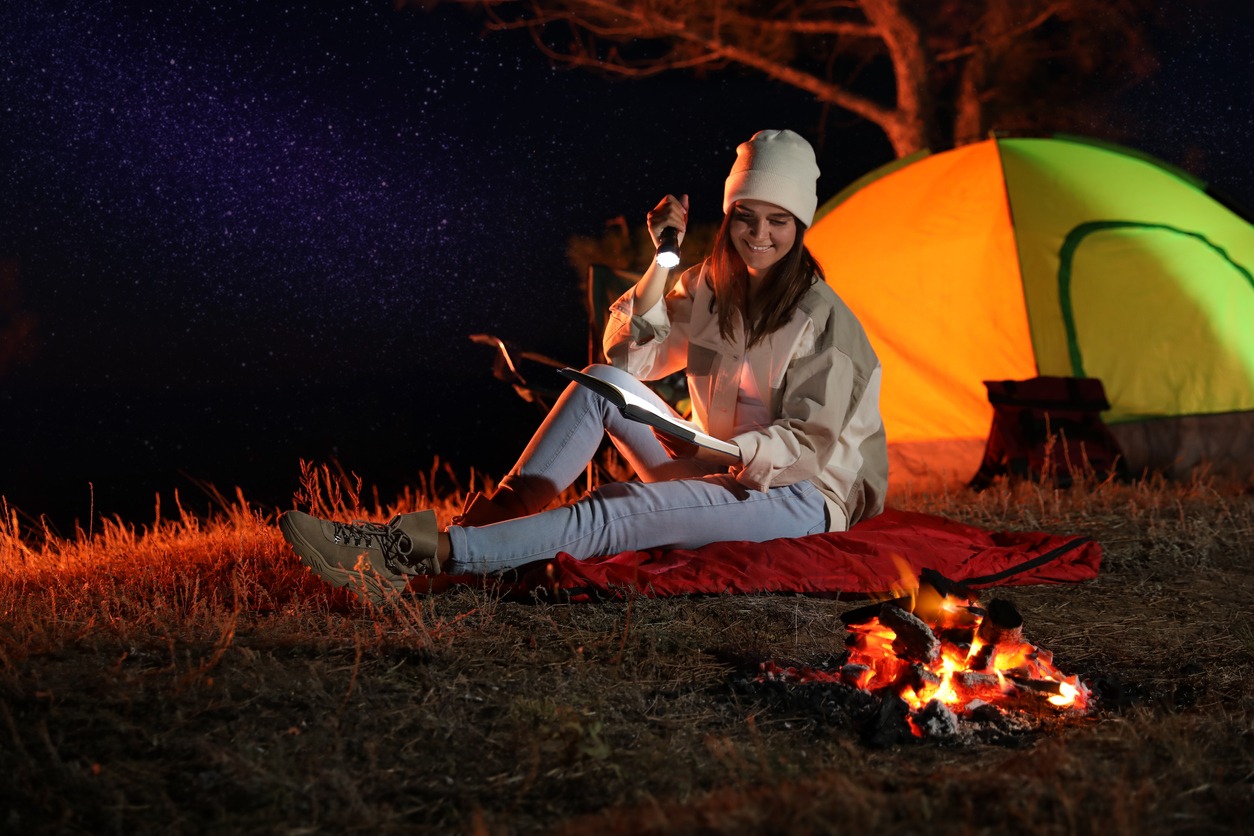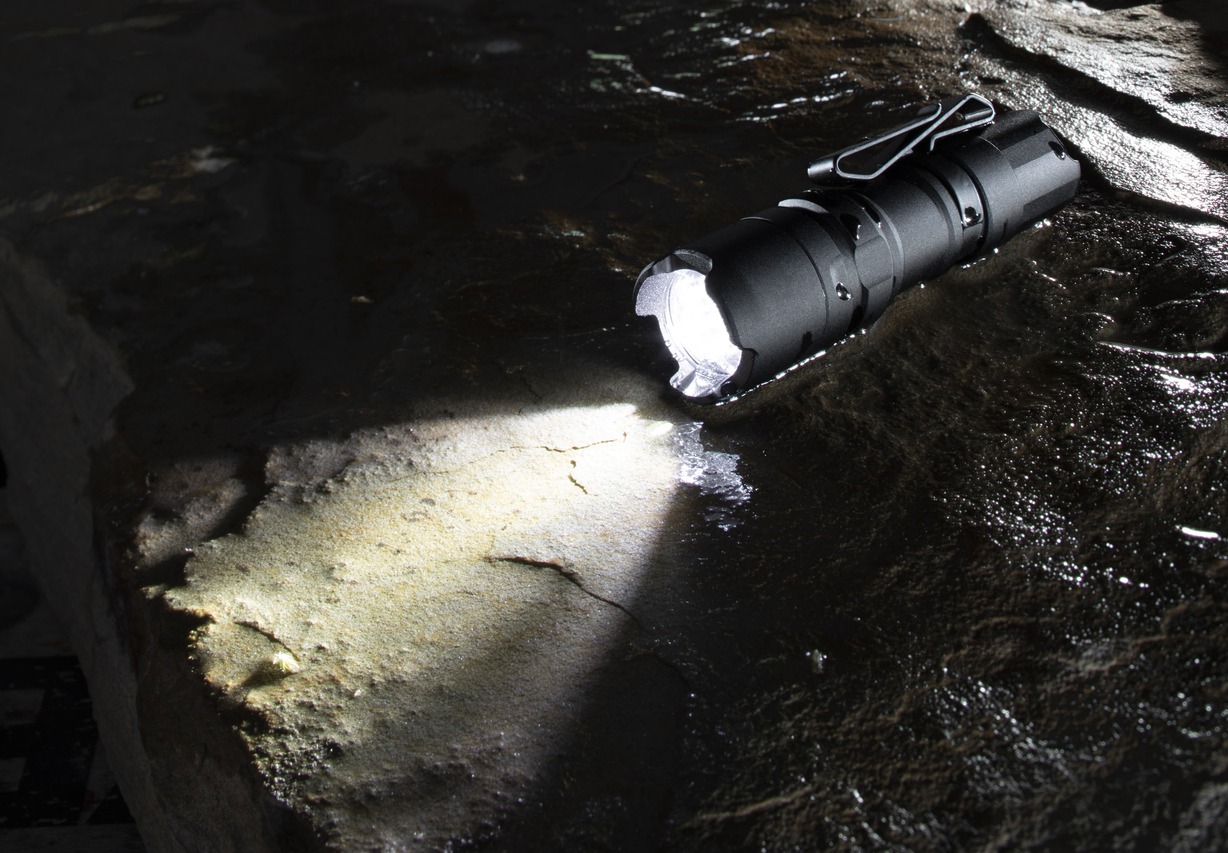When you go hiking and camping, you are likely to stay overnight and be in the woods as nighttime falls. In such scenarios, many people use their phones to illuminate their surroundings. Still, there is only so long your phone battery can last. Therefore, having a flashlight is extremely useful.
Flashlights are available in various types with different bulbs, built materials, and durability. These different kinds are often designed to be used in certain situations. Due to the large variety, it is essential that you know what to look out for when choosing a flashlight for hiking and camping purposes. This is because they won’t be the same as the ones you use for general purposes.
Uses of a Camping and Hiking Flashlight
A flashlight is an essential item when camping and hiking because it is convenient and keeps you safe on rough terrain. You can use your flashlight in the woods in many different ways. Here are a few of them.
Emergency Tool
Regardless of how good your phone’s battery life is, you should always keep a flashlight with you. When out, it is essential that you conserve your battery life in case of an emergency, and using your phone’s flashlight can drain it. By having a flashlight, you will be prepared for power outages and sudden disturbances. You can even use it to find lost items.
Reading and General Lighting
Depending on the area you are hiking and camping in, you may or may not have light facilities. A flashlight will ensure that you can continue your activities even after the sun goes down. If you want to play a game or read a book, a flashlight will help light up the area so you can have fun late into the night.
Self-defense
Flashlights are excellent self-defense weapons. Suppose an intruder sneaks into your campsite, or you need to protect yourself in any situation. In that case, you can shine the flashlight on their face. Depending on your flashlight’s strength and brightness, you can disarm or distract the intruder for a few seconds, which can help you escape the situation. For flashlights to be used as a self-defense tool, they should have a light output of at least 120 lumens. Also, some flashlights are heavy, so you can use them to strike your attacker.
Factors To Consider When Purchasing a Flashlight
Due to the large variety of flashlights available on the market, it may become difficult to choose one with all the critical features. If you plan on using your flashlight for hiking and camping, here are some factors you should consider to find a suitable flashlight.
Types of Flashlights
The first step when choosing flashlights is determining the type of flashlight you want. Here are four of the main types of flashlights.
| Type of Flashlight | Description |
| General Purpose Flashlight | These flashlights are designed to be simple yet effective. They are lightweight and handheld, which makes them easy to carry. You can use these for general everyday tasks. |
| Industrial or Heavy-Duty Flashlights | Industrial or heavy-duty flashlights are tough and durable. They come in various brightness and battery types. The safety rating is important for such flashlights as they are often used in hazardous conditions. |
| Tactical Flashlights. | Tactical flashlights are mainly used by those in law enforcement because they are light and extremely bright. Such flashlights are durable and shock-resistant, making them perfect for emergency situations. |
| Headlamp Flashlights | Headlamp flashlights are hands-free flashlights that you can strap to your forehead. They are convenient to use and also cost-effective. |
Of the four types of flashlights, tactical and headlamp flashlights are perhaps the most useful when hiking or camping. The durable nature of tactical flashlights makes it so that you don’t have to worry about dropping them when hiking. They are also bright, so you can see your path clearly and use them for self-defense if the need arises.
Headlamp flashlights are also helpful as you can have full use of both of your hands. This is useful because you will most likely be holding onto other stuff when hiking or camping. Having a headlamp can reduce the number of things you need to carry. For more tips on how to pick the right flashlight for you, head over to our Ultimate Guide to Selecting a Flashlight
Flashlight Dimensions
When purchasing a flashlight for outdoor purposes, it is important that you keep the flashlight dimensions in check. Purchasing a flashlight that is too heavy or large will prove to be a hindrance when you are out in the wilderness. Your arms will get tired quickly, and you will also have trouble storing them properly.
Ideally, you should purchase a lightweight flashlight that weighs around 1 to 2 pounds or even less. However, it is crucial to keep in mind that the weight and size of the flashlight can vary depending on the battery type, size, and the kind of material used to make the flashlight.
Batteries
A long battery life is a must on flashlights, and if you plan to use it outdoors, you will likely need to use it for extended periods. There are two kinds of flashlight batteries. Rechargeable and non-chargeable. Although rechargeable batteries are the most cost-effective because you do not need to keep repurchasing batteries. However, they might prove to be troublesome when hiking and camping because you won’t have a place to charge them.
In such cases, it is best to opt for flashlights that run on durable lithium-ion batteries and keep extras. You can also purchase solar-powered batteries, but their usefulness will be limited by the amount of sun during the day. If the day is overcast, you won’t be able to recharge it.
Light Output
The light output is a measure of the brightness of a flashlight and is measured in lumens. The number of lumens determines how bright a flashlight is. The larger the lumen count, the brighter the flashlight. The light output varies greatly, and you can find flashlights with a light output ranging between 20 lumens to 3500 lumens.
On average, 100 lumens is enough for everyday use as it can illuminate objects from 20 to 30 feet. For outdoor flashlights, that may not be enough. Tactical flashlights have a high light output starting from 120 lumens and can go up to 300 to 1000 lumens. This light output is much more helpful as you can see a larger area around you and protect yourself against potential attackers.
Beam Type
The beam type is an essential factor when choosing a flashlight because it determines the width of the light beam. Here are the three main beam types.
| Beam Type | Description |
| Flood Beam | A flood beam emits a broad floodlight that allows you to see closeby objects clearly. Due to the width, this beam does not work well for seeing far-away objects. |
| Spot Beam | A spot beam or focused beam is excellent for brightening up far-away objects. Using these, you can easily see your surroundings and find your route in the dark. These flashlights are perfect for camping and hiking. |
| Adjustable Beam | If your flashlight has the option for an adjustable beam, you can change up the settings to see far away and close up objects clearly. Depending on your situation, you can change up the beam type. Flashlights with adjustable beams are often expensive. |
Waterproof
When out on a camping trip, you never know when you may encounter rain or a pond, which is why it is essential that your flashlight is water-resistant. There are various IPX ratings that measure how water-resistant a flashlight is. Ideally, your flashlight should have an IPX rating of 6 or 7. At IPX-6, your flashlight is protected against a powerful spray of water from any direction.
At IPX-7, your device will be protected from complete water submersion for at least 30 minutes in 1-meter-deep water.
Durability
Since you will be wandering among trees and rocky terrain when camping and hiking, choosing a durable flashlight is essential. The durability depends on various factors, including the construction, the kind of bulb used, and the material it is made of.
Most flashlights are constructed using plastic and aluminum, which are both durable materials. In general, flashlights that are thicker are more durable, but they are also heavier. Thinner flashlights, in comparison, are lighter and easier to carry around, but they are also more likely to break easily. When picking a flashlight, you should aim to choose one that is embedded with stainless steel as it helps improve its strength.
Impact Resistant
The impact resistance of a flashlight is how much damage it can bear before it breaks. Purchasing a flashlight that is impact resistant is important because it allows the flashlight to remain functional even after you drop it. Accidents are common when hiking or camping, so choosing an impact-resistant flashlight is essential.
FAQ
1. How many lumens do you need for a hiking flashlight?
When hiking, your flashlights should ideally have 250 to 500 lumens. Flashlights with such a light output provide sufficient illumination to see a considerable distance in front of you at night.
2. Can I leave the batteries in my camping flashlight when I am not using it?
Depending on your flashlight’s battery, it may or may not leak and cause damage. Alkaline batteries can often leak, which can cause damage to your flashlight.
Additionally, leaving your batteries in the flashlight can also cause them to drain faster through discharging. Therefore, it is best to remove the batteries if you do not plan on using them for an extended period.
3. What color flashlight should I use at night for camping?
Cool white is a better tint for camping flashlights as it is bright and illuminates the area in front of you well.
Conclusion
Flashlights are a necessity when hiking and camping because it serves multiple purposes. In case of an emergency, flashlights can not only provide light but also serve as a weapon. Various kinds of flashlights are available in the market, and choosing one can be difficult. So it is essential that you focus on a few key factors, including the dimensions, type, beam type, light output, and durability. These features will help you pick the perfect flashlight for camping and hiking.
If you want to know more about other essential camping items besides the flashlight, you can read our Guide to Selecting Items Needed for a Camping Trip.


